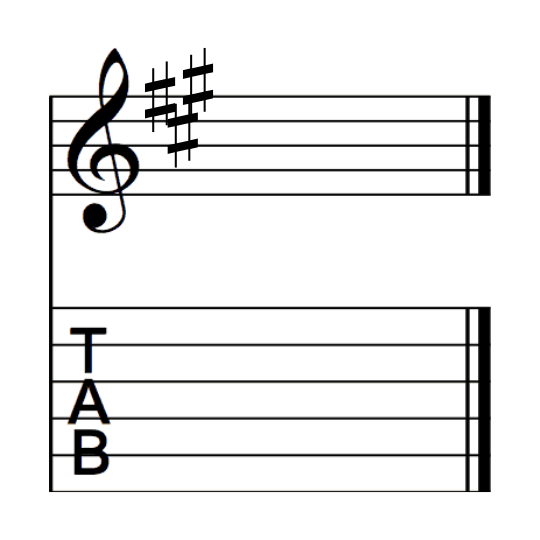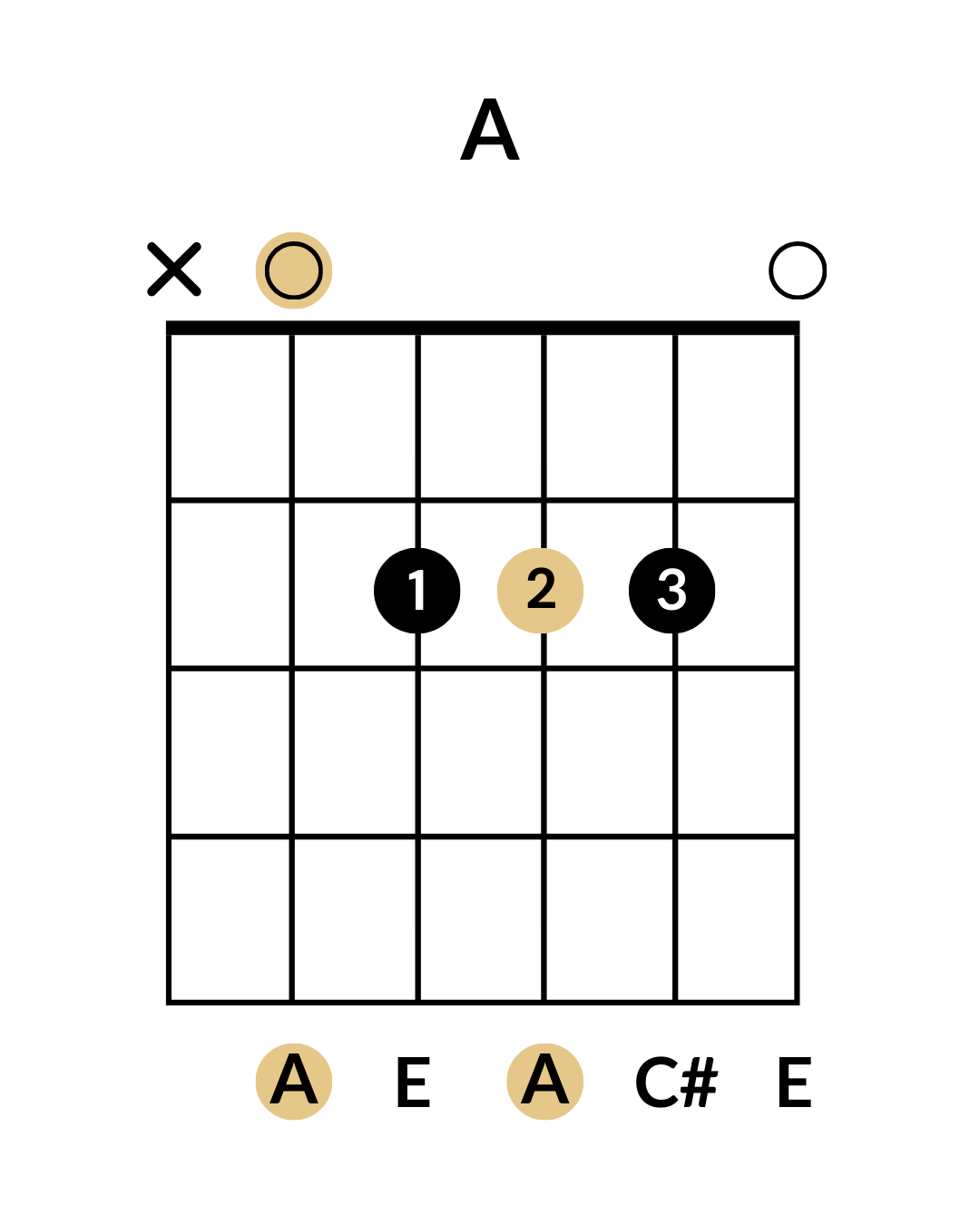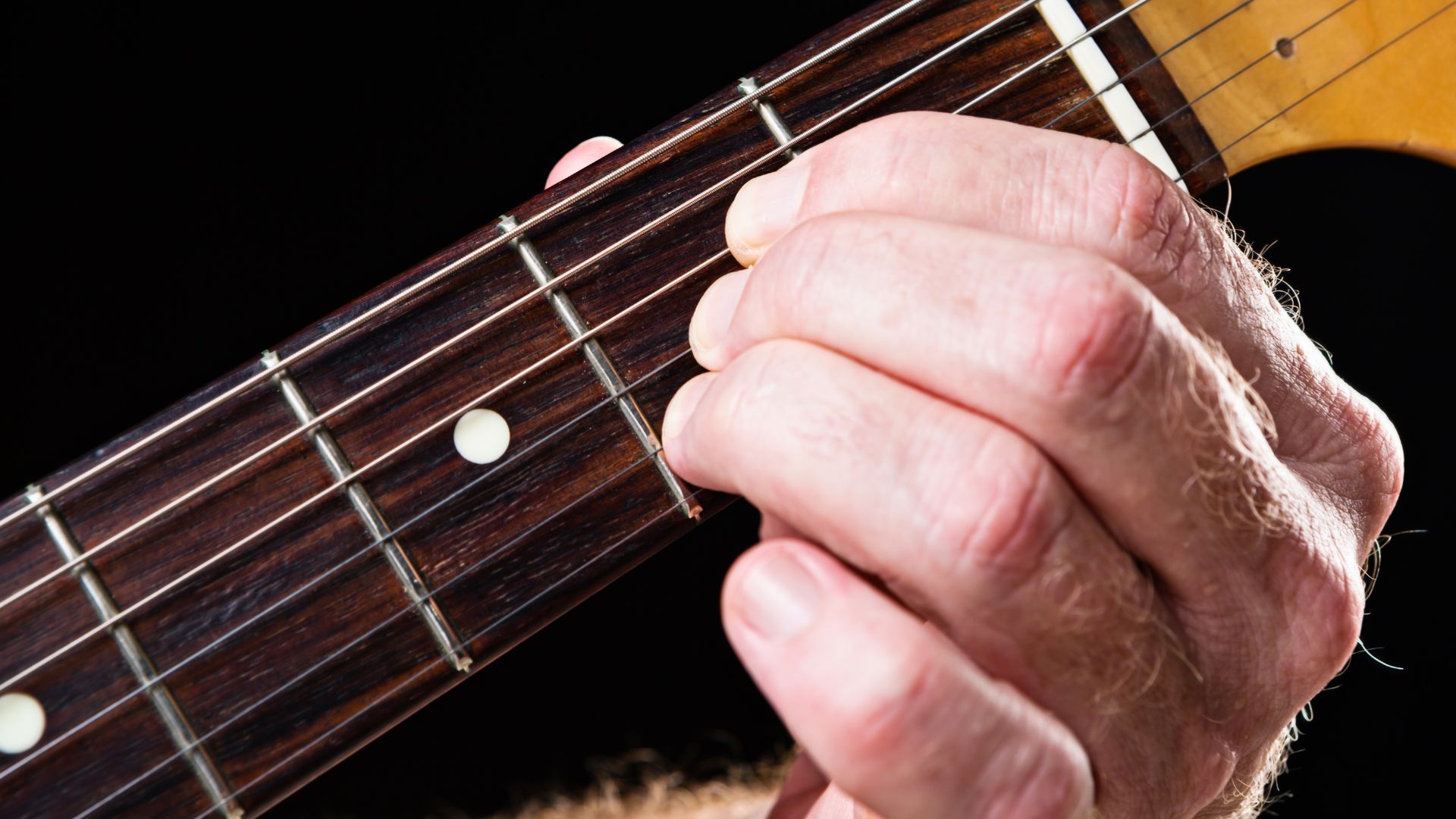With its comfortable open chord shapes and rich tone, it’s a favorite in genres like country, pop, rock, blues, and more. The A major scale contains three sharps: F#, C#, and G#, and its relative minor is F# minor.

How to Identify A Major in Sheet Music
The A major key is marked by three sharps in the key signature: F#, C#, and G#. Most melodies and harmonies will resolve to the A note or A major chord.
Why Guitarists Love A Major
- Features easy-to-play open chords
- Sounds rich and vibrant when strummed
- Works well for both rhythm and lead playing
- Often used in upbeat, energetic songs
Famous Songs in A Major
- “Sweet Home Alabama” – Lynyrd Skynyrd
- “Hey There Delilah” – Plain White T’s
- “You Give Love a Bad Name” – Bon Jovi
- “Brown Eyed Girl” – Van Morrison (partially in A)
- “La Grange” – ZZ Top
These examples show how A major works across multiple styles and moods.
A Major Scale
The notes in the A major scale are: A – B – C# – D – E – F# – G# – A
This scale forms the basis for melodies, riffs, and solos in the key of A major.

Chords in the Key of A Major
The diatonic chords in A major are:
- A major (I)
- B minor (ii)
- C# minor (iii)
- D major (IV)
- E major (V)
- F# minor (vi)
- G# diminished (vii°)
Popular Chord Progressions in A Major
- I – IV – V: A – D – E
- I – vi – IV – V: A – F#m – D – E
- ii – V – I: Bm – E – A
- vi – IV – I – V: F#m – D – A – E
Cadences in A Major
- Perfect Cadence (V – I): E – A
- Plagal Cadence (IV – I): D – A
- Jazz Cadence (ii – V – I): Bm – E – A
Relative Minor: F# Minor
The relative minor of A major is F# minor. Both keys share the same notes but express different emotions:
- A major: uplifting, confident
- F# minor: moody, introspective
F# minor scale: F# – G# – A – B – C# – D – E – F#

Fingering the A Major Chord on Guitar
The open A major chord is straightforward:
- Place your index, middle, and ring fingers on the 2nd fret of the D, G, and B strings
- Strum from the A string down (mute or avoid the low E string)
A Major Chord Attributes
- Intervals: 1 – 3 – 5
- Notes: A – C# – E
- Chord Symbols: A, Amaj
Tips for Playing in A Major
- Try barre chord variations up the neck for dynamics.
- Use A major pentatonic for solos—great for blues and country.
- Combine with open strings for a shimmering, open sound.
- Experiment with A sus2, sus4, and add9 chords for color.
Conclusion
The A major key is a core component of every guitarist’s toolkit. With its energetic tone and accessible chords, it’s great for writing, improvising, and jamming.
Level Up with Fretello
At Fretello, we help you turn music theory into real playing skills. Explore our structured Learn Path and Masterclass Series to master keys like A major and take your guitar playing further—faster.